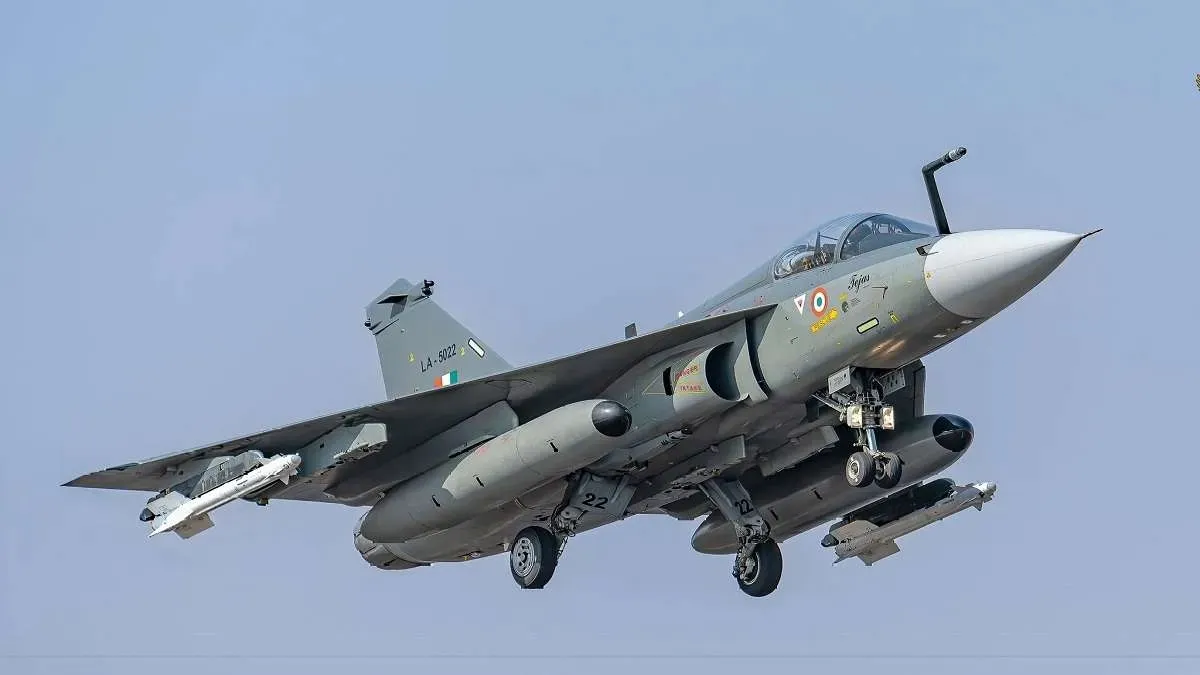The first of 99 F404-IN20 engines for the TEJAS MK-1A was delivered by GE Aerospace to Hindustan Aeronautics Limited (HAL) on March 26, 2025.
This delivery, which highlights GE and HAL’s dedication to strengthening India’s defence capabilities and developing the nation’s military aviation industry, is an important turning point in their four-decade collaboration.
Prime Minister Narendra Modi brought up the matter when he visited the US last month to meet with President Donald Trump.
For the TEJAS MK-1A, an improvement on the domestic Light Combat Aircraft, the F404-IN20 engine was created especially. Following a two-year delay that previously affected the production schedule for 83 TEJAS MK-1A jets, this engine is now being delivered. Air Force Chief Marshal AP Singh recognised the delay and pointed out how it affected the Indian Air Force’s (IAF) plans to expand its fleet.
General Electric’s F404 engine family, which powers hundreds of combat aircraft worldwide, is well known for its success in military aviation. The F404-IN20 is the most thrust-producing of its variants and was designed especially for India’s HAL TEJAS. This cutting-edge turbofan engine has single-crystal turbine blades and high-flow fans, which improve performance and dependability, and can generate a maximum thrust of 19,000 lbf (85 kN).
Originally intended for the F/A-18 Hornet, the F404 series offered substantial thrust capabilities while emphasising dependability and economy. These fundamental design ideas help the F404-IN20 version satisfy the demanding requirements of contemporary aerial combat. The engine’s Full Authority Digital Engine Control (FADEC) technology maximises monitoring and performance while in flight.
The F404-IN20 purchase by India is a component of a larger plan to strengthen its domestic defence capabilities. 99 engines are scheduled to be delivered by 2029 under a 2021 contract between General Electric and Hindustan Aeronautics Limited (HAL); however, supply chain problems worldwide have caused delays in the first deliveries. It is anticipated that the first engines would arrive by March 2025, with 20 engines delivered annually after that.
In order to hasten the assembly of the TEJAS planes and meet the IAF’s contract by 2028, HAL has reorganised its production procedures. The company hopes to deliver at least 16 aircraft each year. Production rates are anticipated to increase dramatically with the advent of the F404 engines.
As the Indian Air Force (IAF) looks to phase out outdated aircraft like the MiG-21 and Jaguar, the TEJAS MK-1A, an enhanced version of India’s indigenous Light Combat Aircraft (LCA) TEJAS MK-1, is intended to greatly increase the IAF’s capabilities.
In order to update the IAF’s light fighter aircraft, this new model features enhanced radar systems, sophisticated avionics, and a wider range of weapons. The aircraft has more than 40 improvements over its predecessor, such as an indigenous Uttam AESA radar and the EL/M-2052 Active Electronically Scanned Array (AESA) radar, which improves target identification and tracking capabilities.
Notwithstanding these developments, there have been considerable delays in the TEJAS MK-1A’s manufacture and delivery. The first batch of 40 aircraft bought in 2009-2010 has not yet been delivered, according to Air Force Chief AP Singh, who voiced his anger earlier this year. He expressed his mistrust of Hindustan Aeronautics Limited (HAL), the state-owned business in charge of producing the aircraft, in a widely shared video.
Engine production-related supply chain problems have been blamed for the delays. According to General Electric Aerospace, the company that produces the F404 engines used in the TEJAS MK-1A, the production line was shut down because there were no further orders.
However, after a five-year break, efforts have been made to resume production in response to a new order for 99 engines in 2021. This circumstance has made it more difficult for HAL to successfully reach its manufacturing goals.
HAL is now working to increase production capacity, with the goal of delivering 16–24 aircraft a year by 2026. An important step in strengthening India’s defence capabilities in the face of growing regional security concerns is the anticipated start of the first delivery in mid-2025.
Since its partnerships with the Aeronautical Development Agency in the 1980s, GE Aerospace has had a significant presence in military jet propulsion in India. An important turning point for GE Aerospace and India came in 2004 when the F404-IN20 engine was chosen for the TEJAS program.
The operationalisation of the TEJAS MK-1A squadrons, which are intended to replace the Indian Air Force’s outdated MiG-21 aircraft, depends on this timely supply.


